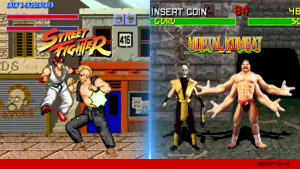DashFight’s Elizbar Ramazashvili writes for Esports Insider to talk about FGC’s esports scene and the sector’s progress.
Preventing game titles have generally been an integral aspect of esports. Most of the titles nonetheless prominently showcased are almost as old as the marketplace itself. The scene’s initial surge in reputation was in the early nineties, with Avenue Fighter and Mortal Kombat shaping the style.
Aggressive Roots

Associated: Pink Bull Kumite heads to Las Vegas in November 2021
In the beginning, the inherently competitive mother nature of 1-on-a single fights served propel the FGC sector into currently being a primary esport style even prior to the time period was coined. Having said that, back again then, there was no way to perform on the net. As such, individuals utilized to gather in modest circles and participate in in opposition to each other in arcades and online video recreation parlours.
Consoles and gaming, in general, was nowhere around as well-known and widespread as it is now. But these gatherings served as a foundation to what the potential of battling games would be crafted on.
Out of these, community leaders arose. Individuals who labored tirelessly poured their entire time into organising an significantly larger number of situations for local communities. When titles like Quake, Doom, StarCraft, Warcraft, and, inevitably, Dota and Counter-Strike began to make a identify in esports, it was influenced by the aggressive character of fighting video games like Street Fighter (Atari to Zelda: Japan’s Videogames in World Contexts” by Mia Consalvo).
Even nevertheless battling video games are inclined to have extended lifespans, in esports, only a handful of titles have experienced legitimate longevity. League of Legends, Dota 2, and several Counter-Strike iterations have sat atop the pyramid for a decade by now. These titles have


